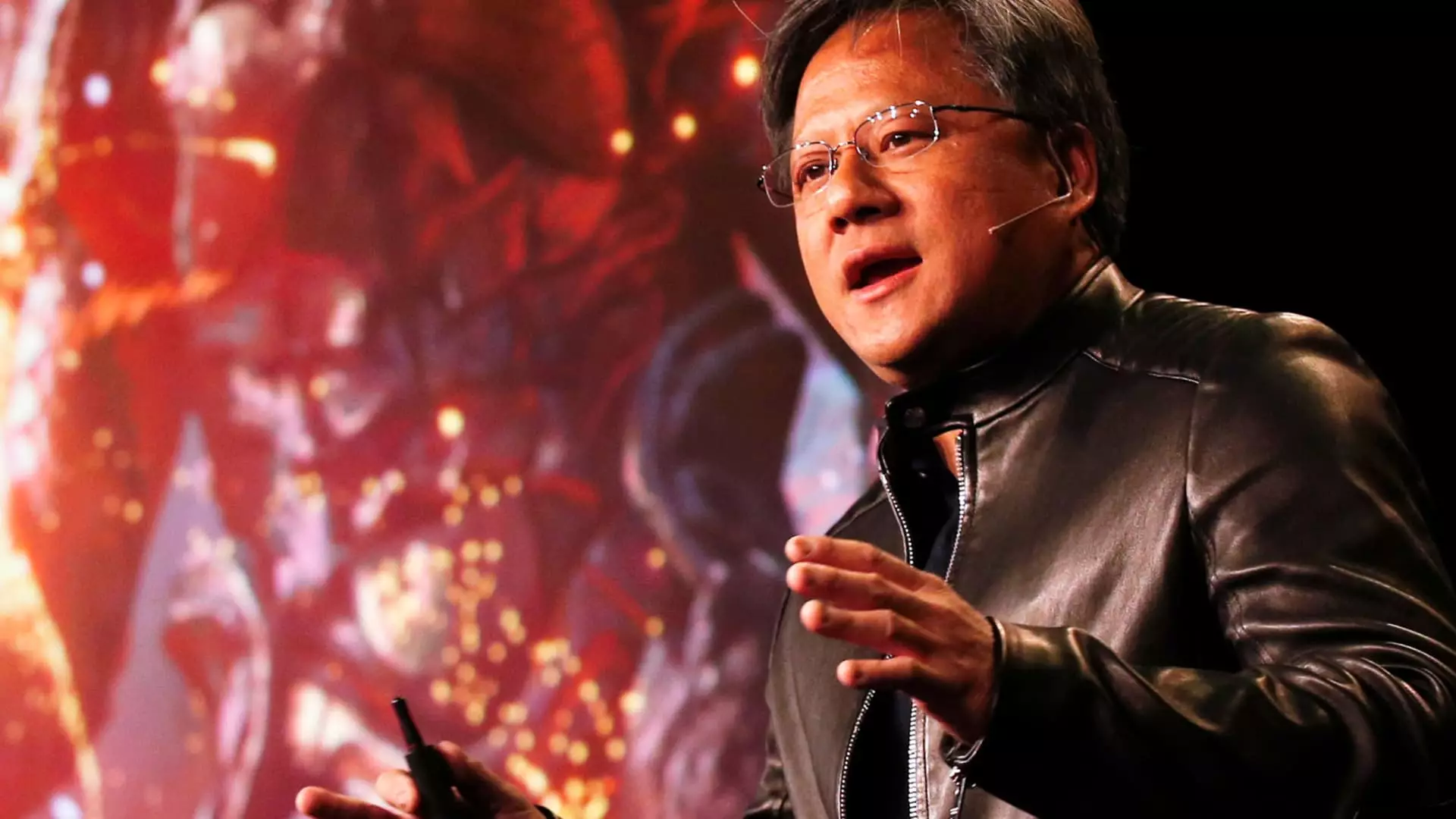The rapid evolution of artificial intelligence technology has generated substantial excitement within the stock market, particularly around companies like Nvidia. However, recent events, particularly the introduction of a cost-effective and open-source AI model from the Chinese startup DeepSeek, have ignited discussions about the sustainability of the burgeoning AI investment landscape. This article critically analyzes the implications of these developments, particularly focusing on Nvidia, its market standing, and the broader ramifications for the tech industry.
DeepSeek’s emergence with an open-source AI model has raised eyebrows in the technology sector, especially considering its reported performance surpassing that of established models like OpenAI’s. The financial implications are staggering; a model developed at a fraction of the cost—less than $6 million—compared to the billions being poured into AI by American tech giants presents a paradigm shift. Investors are wary of a potential market bubble as they grapple with the fear of overvaluation in AI stocks, especially following Nvidia’s drastic 17% plunge.
The drop in Nvidia’s stock, which wiped out over $595 billion in market capitalization in a single day, signals more than just market volatility; it reflects an underlying concern regarding the viability of existing AI valuations. The magnitude of the fall is unprecedented and reverberates throughout the tech sector, causing a ripple effect that saw the Nasdaq Composite Index plunge by 3%.
Despite the shock waves sent through the market, Nvidia appears to be navigating the situation with a mix of humility and cautious optimism. Describing DeepSeek’s R1 model as “an excellent AI advancement,” Nvidia acknowledges the competitive landscape that is rapidly developing. This recognition hints at the company’s understanding that innovation isn’t merely confined to its technological advancements but is a collaborative effort across various players in the AI field.
Moreover, the stock’s modest recovery of approximately 2.5% reflects a glimmer of hope for investors who may question whether Nvidia can maintain its status as the leader in AI. Despite the substantial losses, many analysts have refrained from downgrading the stock, indicating a belief in its long-term potential. Such endorsements suggest that investors need to approach these developments with nuance, recognizing both the advantages and potential drawbacks that arise from an increasingly competitive AI environment.
The introduction of more affordable AI frameworks could usher in an era of expanded adoption across industries, propelling artificial intelligence into the mainstream. Barclays analyst Raimo Lenschow’s insights emphasize that the arrival of powerful large language models (LLMs) at more accessible price points could democratize AI integration. As industries pivot towards embracing generative AI technologies, the overall impact on software development could be brilliant, potentially enhancing productivity and innovation across sectors.
However, it is essential to recognize that this shift may also bring unintended consequences. As the cost and accessibility of advanced technologies rise, companies might face pressures to control expenses while maintaining quality. This could inadvertently cultivate a cycle of innovation that prioritizes short-term gains over sustained advancements.
Nvidia stands at a crucial junction, facing genuine challenges but also exciting opportunities. The recent downturn in stock value serves as a wake-up call for investors and tech companies to reassess the AI market’s dynamics continually. The developments surrounding DeepSeek highlight the importance of adaptability in the tech landscape—a reminder that innovation is no longer a solitary venture but a collective journey. Ultimately, navigating this new terrain will require vigilance and an open-minded approach to the myriad possibilities that lie ahead for both Nvidia and the AI sector at large. As the industry evolves, stakeholders must remain cognizant of emerging trends, maintaining a balance between enthusiasm for innovation and cautious pragmatism regarding future investments.


Leave a Reply